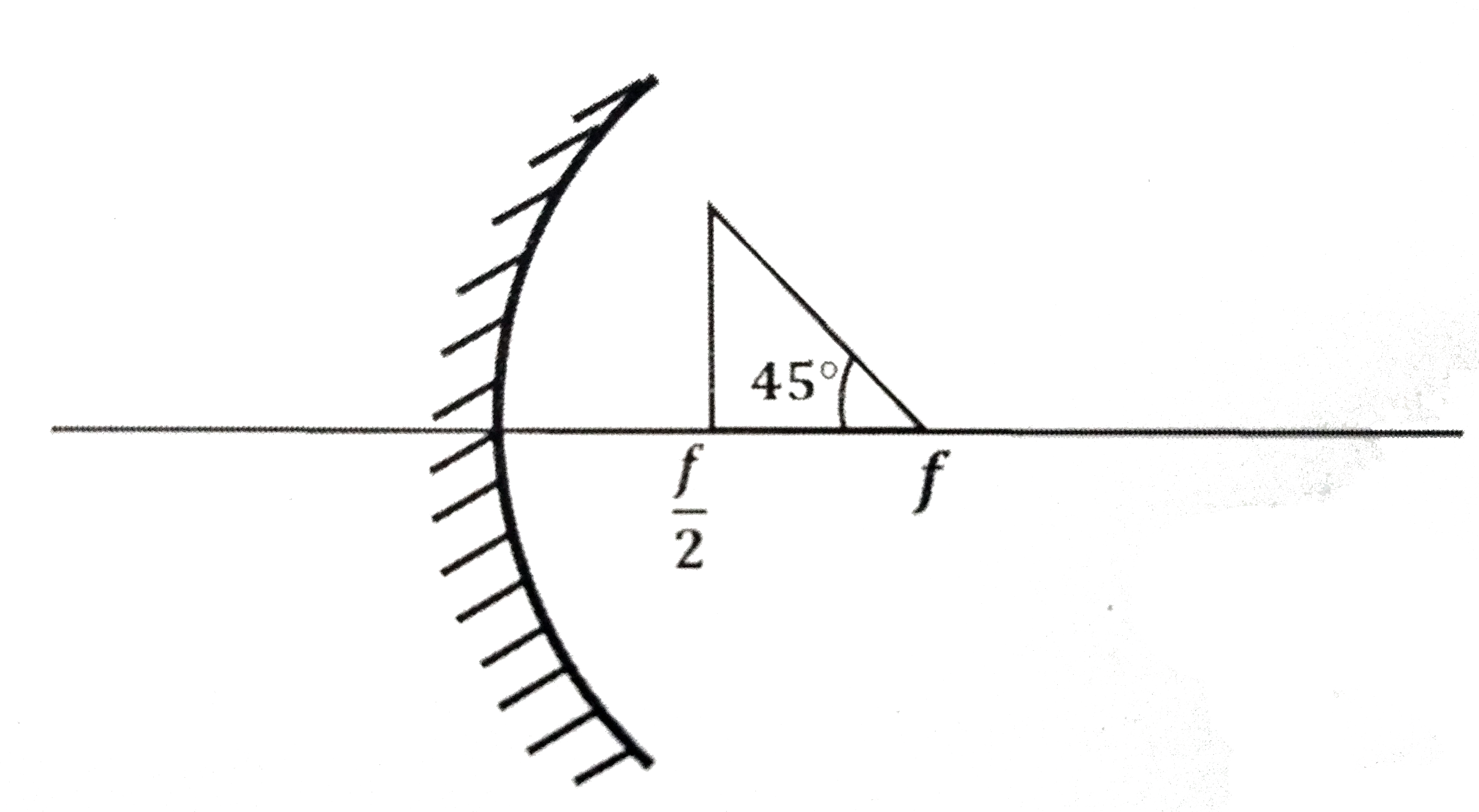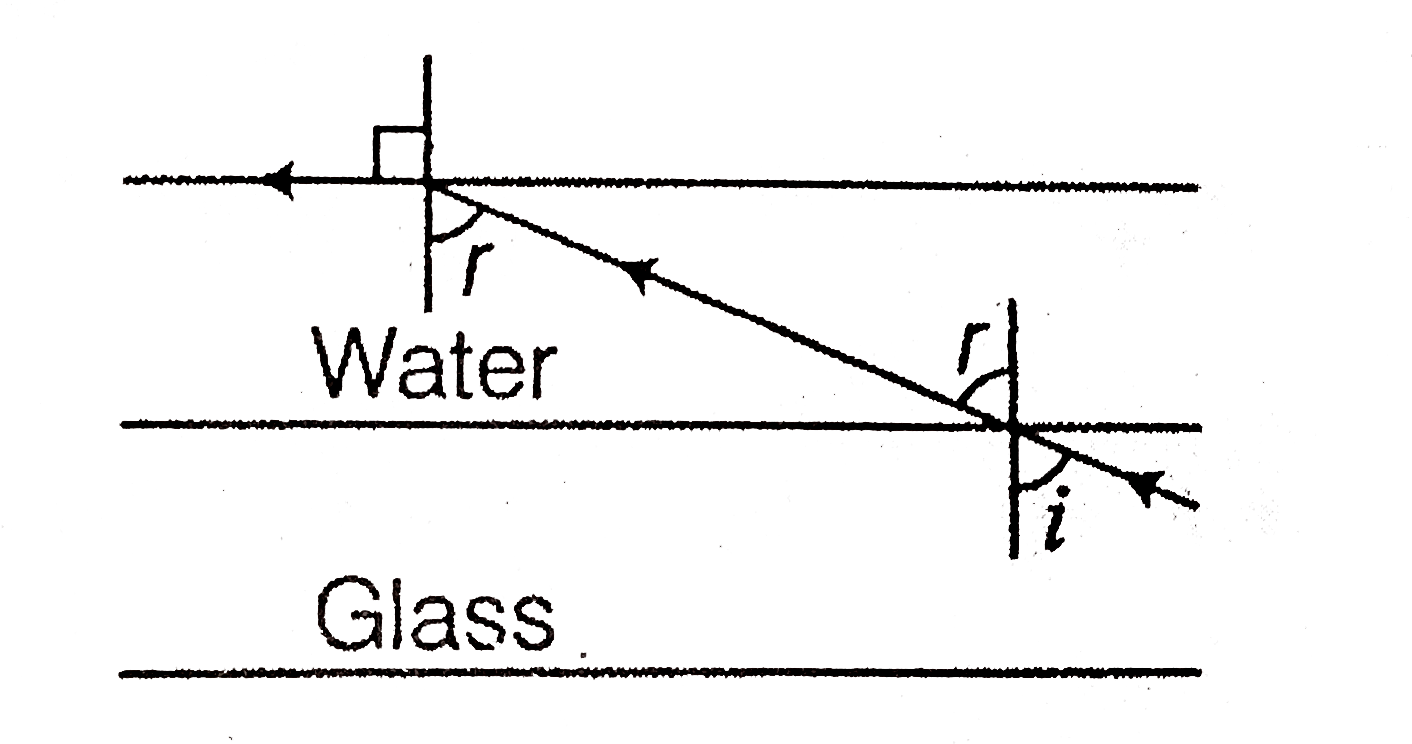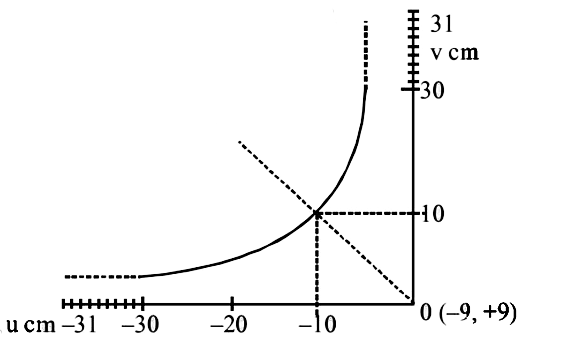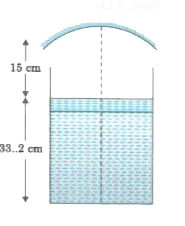Complete Solutions to OBJECTIVE TYPE QUESTIONS (JEE (ADVANCED) FOR IIT ENTRANCE) of chapter RAY OPTICS AND OPTICAL INSTRUMENTS of Class 12 book with complete answers and questions
| Class 12 | PHYSICS |
| Chapter | RAY OPTICS AND OPTICAL INSTRUMENTS |
| MODERN PUBLICATION | OBJECTIVE TYPE QUESTIONS (JEE (ADVANCED) FOR IIT ENTRANCE) |
| Number Of Questions | 20 |
| Academic Year | 2023-24 |
A ray of light passes through four transpar ent media with refractive indices`mu_(1),mu_(2), mu_(3)` and `mu_(4)` as shown in figure. The surfaces of all media are parallel. If the emergent ray is parallel to the incident ray, we must hav

View SolutionA wire is bent in the shape of a right angled triangle and is placed in front of a concave mirror of focal length f,as shown in the figure which of the figures shown in the four options qualitatively represents (s) the shape of the image of the bent wire ? (These figures are not to scale)

View Solution
A ray of light is incident at the glass-water interface at an angle `i` it emerges finnaly parallel to the surface of water, then the value of `mu_(g)` would be
View SolutionA ray of light is incident on an equilateral glass prism placed on a horizontal table. For minimum deviation which of the following is true ?

View SolutionA point object is placed at the centre of a glass sphere of radius 6cm and refractive index 1.5. The distance of virtual image from the surface is
View SolutionFocal length of the plano-convex lens is 15 cm. A small object is placed at A as shown in the figure. The plane surface is silvered. The image will form at `

View SolutionThe graph shown relationship between object distance and image distance for a equiconvex lens. Then focal length of the lens is `

View SolutionA convex lens if in contact with concave lens. The magnitude of the ratio of their focal length is `(2)/(3)`. Their equivalent focal length is 30 cm. What are their individual focal lengths?
View SolutionA container is filled with water `(mu = 1.33)` up to height of `33.2 cm`. A concave mirror is placed 15 cm above the water level. Image of an object placed at the bottom is formed at the same place. The focal length of mirror is :

View SolutionA ray of light travelling in water is incident on its surface open to air. The angle of incidence is `theta`, which is less than the critical angle. Then there will be
View SolutionIn an experiment to determine the focal length `(f)` of a concave mirror by the `u-v` method, a student places the object pin A on the principal axis at a distance x from the pole P. The student looks at the pin and its inverted image from a distance keeping his/her eye in line with PA. When the student shifts his/her eye towards left, the image appears to the right of the object pin. Then,
View SolutionA light beam is traveling from Region I to region IV (refer figure). The refractive indices in Region I, II, III, and IV are `n_(0), n_(0)//2,n_(0)//6 and n_(0)//8` , respectively. The angle of incidence `theta` for which the beam just misses entering Region IV is

View SolutionA biconvex lens of focal length 15 cm is in front of a plane mirror. The distance between the lens and the mirror is 10 cm. A small object is kept at a distance of 30 cm from the lens. The final image is
View SolutionA light ray travelling in glass medium is incident of glass- air interface at an angle of incidence `theta`. The reflected `(R )` and transmitted (T) intensities, both as function of `theta`, are plotted The correct sketch is
View SolutionA bi-convex lens is formed with two thin plano-convex lenses as shown in the figure. Refractive index n of the first lens is 1.5 and that of the second lens is 1.2. Both the curved surface are of the same radius of curvature R=14 cm. For this bi-convex lens, for an object distance of 40 cm, the image distance will be `

View SolutionA ray of light travelling in the direction `1/2 (hati+sqrt(3)hatj)` is incident on a plane mirror. After reflectiion, it travels along the direction `1/2(hati -sqrt(3)hatj)`. The angle of incidence is
View SolutionA point source S is placed at the bottom of a tranparent block of height 10mm and refractive index 2.72. It is immersed in a lower refractive index liquid as shown in the figure. It is found that the light emerging from the block to the liquid forms a circular bright spot of diameter 11.54 mm on the top of the block. The refractive index of the liquid is `

View SolutionTwo identical glass rods `S_(1)` and `S_(2)` (refractive index=1.5) have one convex end of radius of curvature 10 cm. They are placed with the curved surfaces at a distance d as shown in the figure, with their axes (shown by the dashed line) aligned. When a point source of light P is placed inside rod `S_(1)` on its axis at a distance of 50 cm from the curved face, the light rays emenating from it are found to be parallel to the axis inside `S_(2)`. The distance d is

View SolutionA parallel beam of light is incident from air at an angle `alpha` on the side of right angled triangular prism of refractive index `mu = sqrt(2)`. Light undergoes total internal reflection in the prism at the face `PR` when `alpha` has a minimum value of `45^@`. The angle `theta` of the prism is.
 .
.
View SolutionA small object is placed 50 cm to the left of a thin convex lens of focal length 30 cm. A convex spherical mirror of radius of curvature 100 cm is placed to the right of the lens at a distance of 50 cm. The mirror is tilted such that the axis of the mirror is at an angle `theta``=30degree` to the axis of the lens, as shown in the figure
If the origin of the coordinate system is taken to be at the centre of the lens, the coordinates (in cm) of the point `(x,y)` at which the image is formed are

View Solution
OBJECTIVE TYPE QUESTIONS (JEE (ADVANCED) FOR IIT ENTRANCE) questions and complete solutions for chapter RAY OPTICS AND OPTICAL INSTRUMENTS of MODERN PUBLISHERS PHYSICS (HINGLISH) of Class 12
All Exercises from MODERN PUBLICATION Class 12 PHYSICS RAY OPTICS AND OPTICAL INSTRUMENTS
- CHAPTER PRACTICE TEST
- Conceptual Questions
- Higher Order Thinking Skills & Advanced Level (QUESTIONS WITH ANSWERS)
- NCERT (EXemplar Problems Obejective Questions) (Multiple Choice Questions (Type-I)
- NCERT (EXemplar Problems Obejective Questions) (Multiple Choice Questions (Type-II)
- NCERT (Exemplar Problems Subjective Questions) (Very Short Answer Type Questions)
- NCERT FILE SOLVED (TEXT BOOK EXERCISES)
- OBJECTIVE TYPE QUESTIONS (A. MULTIPLE CHOICE QUESTIONS)
- OBJECTIVE TYPE QUESTIONS (ASSERTION REASON TYPE QUESTIONS)
- OBJECTIVE TYPE QUESTIONS (B. MULTIPLE CHOICE QUESTIONS)
- OBJECTIVE TYPE QUESTIONS (C. MULTIPLE CHOICE QUESTIONS)
- OBJECTIVE TYPE QUESTIONS (D. MULTIPLE CHOICE QUESTIONS)
- OBJECTIVE TYPE QUESTIONS (INTEGER TYPE QUESTIONS)
- OBJECTIVE TYPE QUESTIONS (JEE (ADVANCED) FOR IIT ENTRANCE)
- OBJECTIVE TYPE QUESTIONS (JEE (MAIN) & OTHER STATE BOARDS FOR ENGINEERING ENTRANCE)
- OBJECTIVE TYPE QUESTIONS (MATCHING TYPE QUESTIONS)
- OBJECTIVE TYPE QUESTIONS (MATRIX MATCH TYPE QUESTIONS)
- PRACTICE PROBLEMS (1)
- PRACTICE PROBLEMS (10)
- PRACTICE PROBLEMS (11)
- PRACTICE PROBLEMS (2)
- PRACTICE PROBLEMS (3)
- PRACTICE PROBLEMS (4)
- PRACTICE PROBLEMS (5)
- PRACTICE PROBLEMS (6)
- PRACTICE PROBLEMS (7)
- PRACTICE PROBLEMS (8)
- PRACTICE PROBLEMS (9)
- Revision Exercises (Additional Questions)
- Revision Exercises (Fill in the Blanks)
- Revision Exercises (Long Answer Questions)
- Revision Exercises (Numerical Problems)
- Revision Exercises (Short Answer Questions)
- Revision Exercises (Very Short Answer Questions)
- SOLVED EXAMPLES
- Tough & Tricky (PROBLEMS)